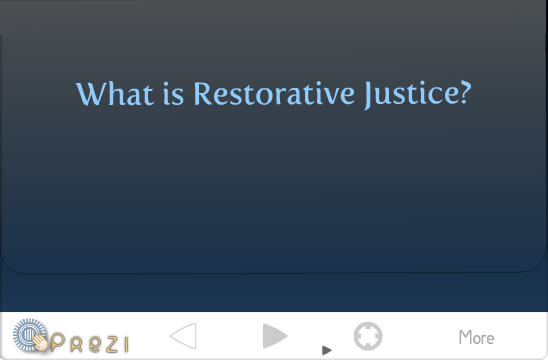The paper will focus on England and Wales (other parts of UK have separate systems. For young offenders the system recently introduced in Northern Ireland is more restorative.)
England and Wales have separate systems for young people (aged 10 and under 18) and adults. There is only one restorative measure nationwide for young offenders: referral order, (described in the example below). Not fully restorative.
There are various attempts to define restorative practices; here is one:
Restorative Action enables people to work together to build community, manage conflict and repair harm. It includes
Restorative Justice, a process for dealing with crime in which everyone affected by it can come together to consider the harm caused and resolve how to put it right. Restorative Action also includes
Restorative Discipline in schools, in which children set their own goals and help each other to meet them through supportive relationships, and learn how to resolve conflict through non-violent dialogue..
Restorative Action aims to create safer, healthier and more self-reliant communities and to manage conflict by repairing harm and building relationships. It uses inclusive processes of decision-making to prevent or minimize tensions, conflict or harm. If an incident of conflict or harm occurs, those affected come together, usually with a facilitator, to resolve how to deal with it and how to act towards each other in future. The facilitators are often members of the community, with professional training and supervision.
What does a measure require if it is to be fully restorative?
• Based on repair of harm suffered by victim (and often deficiencies in the offender's background and upbringing)
• dialogue among those affected by the act
• voluntary participation of victim and offender
• community involvement
• feedback of information about pressures towards crime to those responsible of crime prevention policy and social/economic policy
Some measures are partly restorative - they meet some of these criteria but not others. Others are reparative but not restorative (e.g. no dialogue with victim, or priority to punishment over making amends.)
The full paper can be downloaded here.









No comments